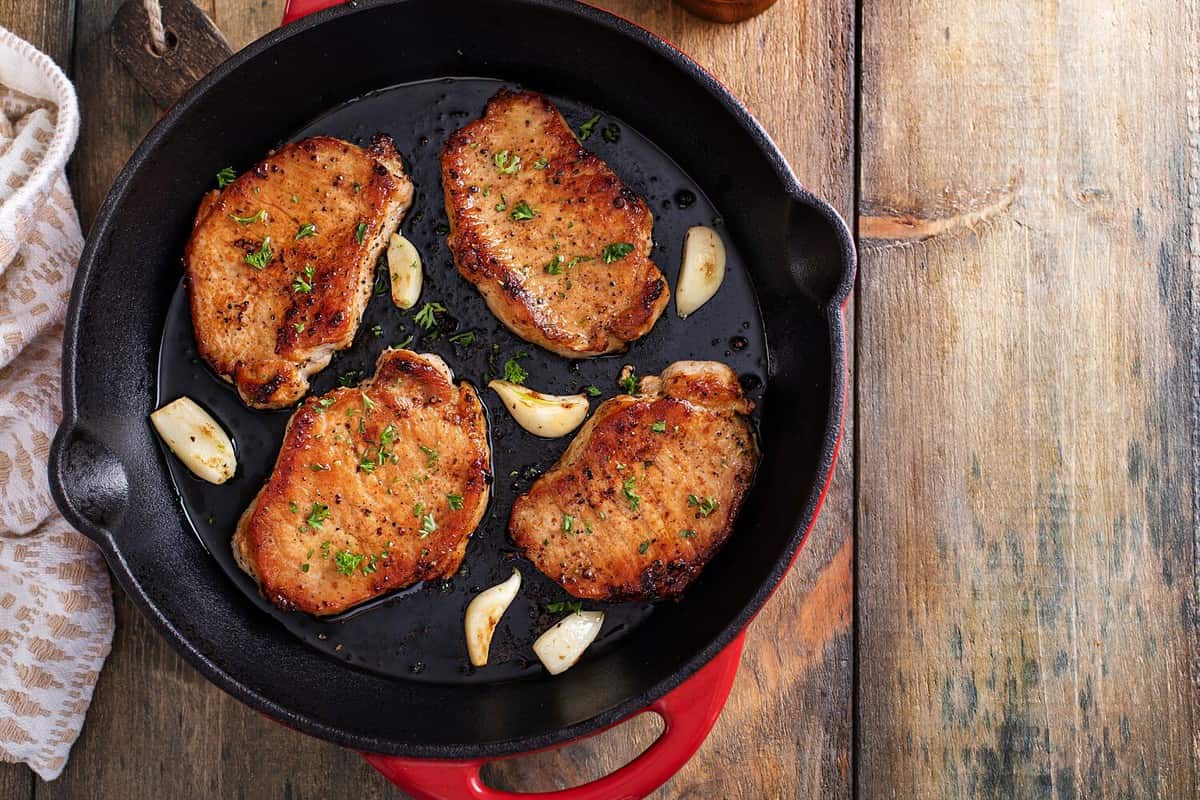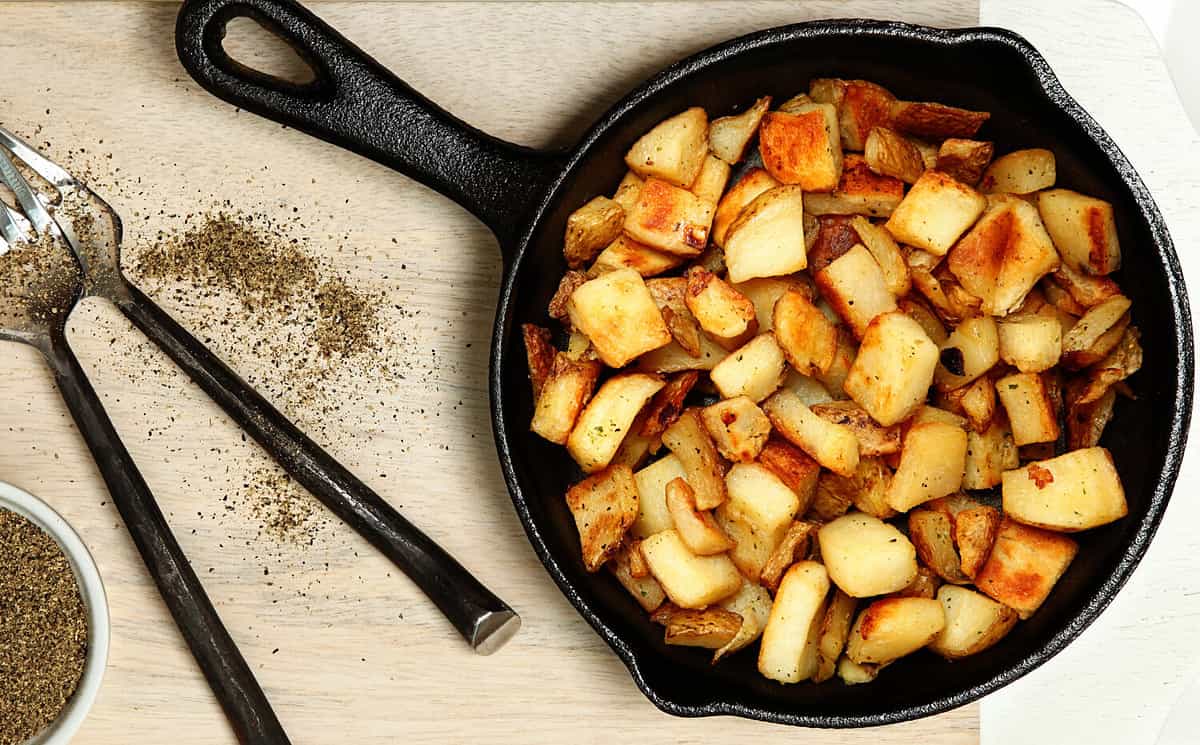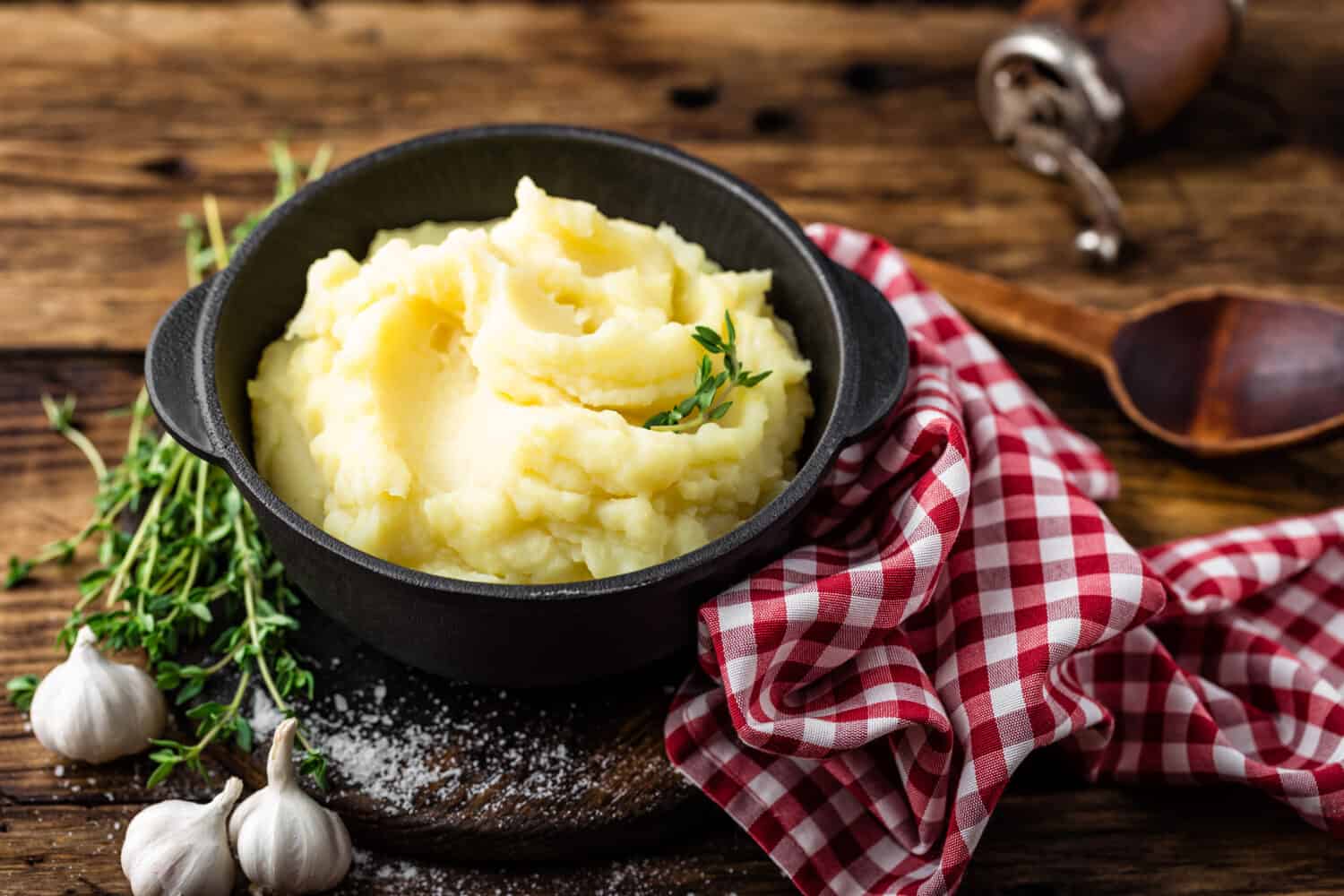If you’re looking into new cookware, two of the types you may have considered are carbon steel and cast iron. While these two types of cookware have quite a lot in common, there are numerous differences between them as well. If you’ve ever wondered about the difference between carbon steel vs. cast iron, we’re going to examine which one might work best in your kitchen.
The main difference between carbon steel vs cast iron is the weight and thermal conductivity. While cast iron and carbon steel both have the same materials, there are different amounts of carbon in each, which makes carbon steel much lighter. Additionally, carbon steel heats up quicker than cast iron but doesn’t retain heat as long.
Which cookware may be right for you can depend on a variety of factors. Keep reading to find out more about whether carbon steel or cast iron cookware is the right choice for you.

©Elena Veselova/Shutterstock.com
Carbon Steel vs. Cast Iron: What Is the Difference?
Most people who cook at home are familiar with cast iron. It’s generally the type of cookware that’s passed down from one generation to the next because of how durable it is. However, carbon steel, while a good alternative to cast iron, isn’t as well known.
Carbon steel and cast iron cookware are actually both made of an alloy of carbon and iron, but the difference in their materials is the amount of carbon. Cast iron cookware has a higher amount of carbon than carbon steel and this is also similar to stainless steel, which contains an even smaller amount of carbon.
These two types of cookware have quite a bit in common, but the main difference is their weight. Although carbon steel is not necessarily a more affordable alternative to cast iron, it does come with less hassle partly because it’s not as heavy and difficult to move around.
The other main difference is the thermal conductivity. While cast iron cookware stays warm for a long time but takes a long time to heat up, carbon steel doesn’t take quite as long since it’s a lighter material. On the other hand, it also doesn’t stay warm for as long as cast iron does, although it still retains heat longer than non-stick or stainless steel.
Both carbon steel and cast iron can be susceptible to rusting, but carbon steel is more likely to rust because of the higher amount of iron.
Main Differences Between Carbon Steel and Cast Iron
Even though cast iron is still a favorite type of cookware in many home kitchens, carbon steel is starting to rise in popularity. This type of cookware combines some of the best parts of both stainless steel and cast iron. If you’re considering whether carbon steel or cast iron may be right for you, here’s a look at the main differences between them:
- Cast iron weighs significantly more
Cast iron cookware is heavy enough that it feels like you’re gaining muscle just by carrying it around the kitchen. While this is part of what makes it so durable for use in a variety of situations, carbon steel offers the convenience of being more lightweight. - Carbon steel heats up faster
Cast iron takes a long time to heat up, due to the weight of the material. Carbon steel is much thinner, which leads to much better heat conduction and a faster cook time. - Cast iron retains heat for longer
The poor thermal conductivity is actually also one of the perks of cast iron since it stays hot for a long time after you’ve removed it from the heat source. This makes it perfect for keeping food warm or even for serving a meal. - Carbon steel is more expensive
When you purchase carbon steel, you’re paying for the convenience of it being less hassle. When it comes to cost, carbon steel is more of an investment than cast iron.
Both carbon steel and cast iron have their place in the kitchen, but there are numerous differences between them. Which one works best for you may depend on your preferences and the needs of your family.
What Is Carbon Steel?
Carbon steel cookware has a combination of iron and carbon, while most of it is made of carbon. It’s known for its durability and how well it compares to cast iron, without some of the hassle.
Compared to cast iron, carbon steel is much more lightweight which makes it easier to use, store, and even take on the go. It also heats up much faster than cast iron cookware due to how lightweight it is.
Like cast iron, carbon steel also requires seasoning since it doesn’t naturally have a non-stick surface. The two types of cookware have similar maintenance requirements, but carbon steel is more likely to rust. However, seasoning the cookware properly does help to prevent rusting.

©Ixepop/Shutterstock.com
What Is Cast Iron?
Cast iron is still a popular choice in kitchens across the world and often becomes a family heirloom that parents pass down from one generation to the next. This type of cookware is nearly indestructible. While it can shatter or break when dropped, it’s not at risk of scratching or chipping like other types of cookware such as aluminum.
Like carbon steel, cast iron also has a combination of carbon and iron. You’re not likely to see this type of cookware in professional kitchens due to its heaviness and how long it takes to heat up, but even nowadays, it’s a popular choice for home cooking.
One of the biggest perks of cast iron is how long it retains heat. Even though it does take a while to heat up, it also takes a while to cool down, which makes it great for serving food as well or keeping food warm before a meal.
Which Cookware Is Better for Searing?
The fact that cast iron distributes heat slowly is what makes it such a great tool in the kitchen. Even though it takes a while to heat up, the temperature of the pain is generally unaffected by when you add cold ingredients to the pain. You also don’t have to worry about keeping your food warm once you've finished cooking.
When it comes to searing, both carbon steel and cast iron can work well. However, keep in mind that carbon steel will take much less time to sear since the pan will heat up faster than a cast iron skillet. On the other hand, in a carbon steel pan, the addition of food or other ingredients can slightly impact the temperature.
Unless the cooking time is a significant factor for you, cast iron is going to offer more consistency across the board when it comes to temperature changes and a perfect sear. If you’re looking for efficiency, you’re better off using carbon steel.
Is Carbon Steel More Affordable?
Considering the durability of cast iron, you might be surprised to find out that it’s actually the more affordable option of the two. Cast iron is still one of the most affordable choices when it comes to types of cookware, and you can purchase a solid cast iron pan for less than $50 that will last for decades, if not longer.
With carbon steel, you’re paying more for the convenience of the cookware rather than the durability of it. While carbon steel can also last a long time, it does cost more than cast iron. However, due to the lightweight nature of it compared to cast iron, many believe it’s worth the investment.
Carbon Steel vs. Cast Iron: Which One Is Better?
Carbon steel and cast iron have quite a bit in common, and carbon steel is quickly becoming a popular alternative for those who previously swore by using only cast iron cookware. Even though both these types of cookware require maintenance and seasoning, they can also be valuable tools when used properly.
Like most choices in the kitchen, which one is better is going to depend on our specific needs and preferences. Since carbon steel heats up much quicker and is more lightweight, it can be a great alternative to cast iron, but unless you have a need to rush things in the kitchen, there’s nothing that can quite beat the classic cast iron skillet. Cast iron is also the superior choice if you want something you can pass on to the next generation.
The image featured at the top of this post is ©Sea Wave/Shutterstock.com.
